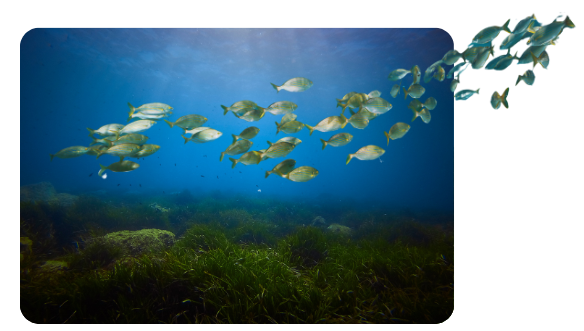Story
First-of-its-kind data buoy launched as part of multi-million pound Smart Sound fleet
05 July 2021
The culmination of two years detailed planning and development, a custom-built 8.5-metre-tall autonomous data buoy – featuring a set of onboard sensors found nowhere else in the world – has been launched by scientists from Plymouth Marine Laboratory.

The new buoy, which received support from the European Regional Development Fund (ERDF) as part of the Marine Business Technology Centre, is designed to deliver an unprecedented level of environmental data and will help provide a unique capability for UK marine science, technology and innovation.
Having been berthed at Turnchapel Wharf, the buoy – which includes an autonomous water column profiling system – is currently undergoing final in-water checks ahead of its deployment to its permanent station within the Western Channel Observatory area of the English Channel. As part of a fleet of interconnected marine technologies, it will play a key role within Smart Sound Plymouth – the multi-million-pound initiative to create an unrivalled proving ground for high-tech marine innovation and support existing world-leading marine science capabilities off the Devon coast.
Alongside the buoy – which was built by Mobilis and provided through Hydrosphere UK – Smart Sound’s futuristic fleet of ocean robots includes a five-metre AutoNaut unmanned surface vessel and four autonomous underwater robots from ecoSUB robotics, funded by the Natural Environment Research Council (NERC). The fleet will be linked via “Smart Sound Connect’, a £1.8m investment to deliver a high-speed above-water communications network through which the vessels and equipment will be able to communicate.
The surface vessel, PML Pioneer, is one of only two of its kind in the UK and will be the only one regularly deployed in UK waters. Propelled by wave motion and powered by 300-hundred watt solar panels, it contains the most advanced scientific payload to be deployed from an AutoNaut and includes state-of-the-art chemical sensors and a photosynthetic efficiency and rate sensor. The PML Pioneer will communicate with the flotilla of new generation ecoSubs, the largest in the UK, which will be uniquely integrated together using acoustic underwater communications and able to provide highly accurate multi-vehicle synchronized surveys.
The buoy is equipped with a sophisticated scientific payload with the oceanographic sensors profiling through the water column several times a day. These sensors are measuring standard parameters such as temperature and salinity but also measuring the amount of single cell plants, called phytoplankton, in the ocean. Other important scientific measurements include dissolved oxygen, pH, the clarity of the water and the nutrient levels. Plymouth Marine Laboratory has a long and well-established collaboration with the Met Office which has also provided a full meteorological monitoring system on the buoy. The data from the buoy will be transmitted each hour to both PML and the Met Office, where it will be used to deliver forecasting models.
PML’s Dr James Fishwick, Head of Smart Sound Plymouth and Head of Operations and Technology, Western Channel Observatory said: “The launch of the buoy is a real milestone and it’s hugely gratifying to see it finally in the water, ready to take its place at the heart of Smart Sound Plymouth. We’re incredibly grateful to all the partners involved for helping to make this happen – it’s a really exciting time for Plymouth and the rapidly growing marine tech sector in the South West and beyond. As part of Smart Sound, the buoy will help give us the most advanced capabilities to monitor the marine environment, and test new products and innovations within it. It’s a game-changer for UK marine tech and innovation and opens up new realms of possibilities for what the future might hold.”
Related information
Find out more about Smart Sound Plymouth
